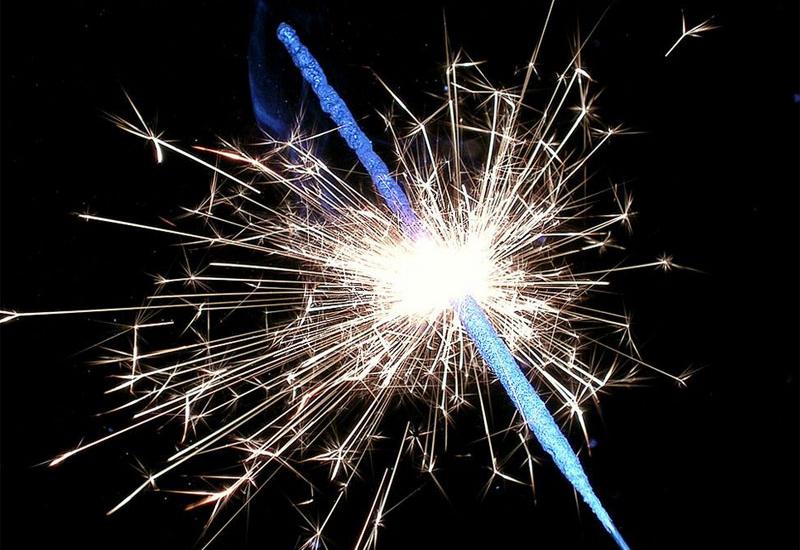We all come from childhood and remember what a miracle it seemed spillage sparks of magic wands - Bengal lights on birthday or New Year. Years go by, and with the same enchanted eyes our children and grandchildren are watching the mini-fireworks..
Bengalis (inhabiting the East India) used such lights as signal ones burning in bamboo tubes mixture of saltpeter, sulfur, and sulfur antimony. Hence the name. In ancient India, in the V-VI centuries BC during religious ceremonies in the temples unusually bright light were lit. Depending on the intentions of the priests and the type of ceremony it could be "evil fire" (added sulfur, which forms during the combustion gas with an unpleasant odor) or "gracious" (probably used rosin).
At the beginning of the VIII centery it was invented color of fire - blue, green, yellow. Also it was figured out how to extend the burning time. For this purpose there were used empty dry stalks or tubes rolled from broad dry leaves. In Europe sparkler came with the opening of trade routes with India. It immediately became an attribute of entertainment: it was lit at balls, during theatrical performances and the like.
According to the chemical science, sparkler is a pyrotechnic composition containing barium nitrate (oxidizer), powdered aluminum or magnesium (fuel), dextrin or starch (cementing) and oxidized iron or steel filings. The composition is applied to the wire to give the so-called Bengal candles. Sparkler burns slowly, scattering bright shiny sparks (burning metal particles). Combustion temperature - 1100 ° C.
The regular Bengal candles are nothing else than the wire covered by the mixture, that burns with the white flames. And you can make homemade colored sparklers. From water a starch paste is cooked. A mixture of iron filings, aluminum or magnesium powder, salt which gives a color to flame and wet potassium chlorate are triturated. This mixture is added to the paste. Then wires are immersed in this mass, dried and re-dipped (up to 5-6 mm in diameter).
And, you can make a "Bengali paper." It burns with a colored flame without smoke and odor. Filter strips, toilet or tissue paper are impregnated with an aqueous solution of salts that produce the oxygen needed for combustion and flame paint.

